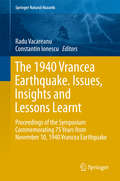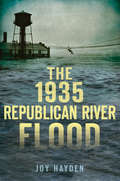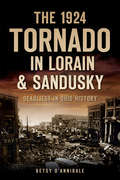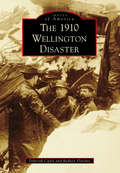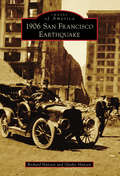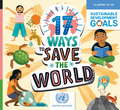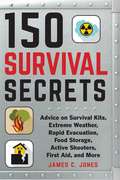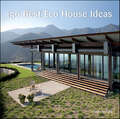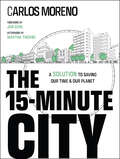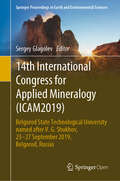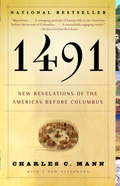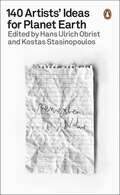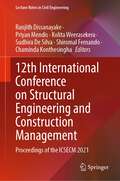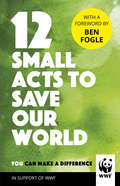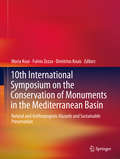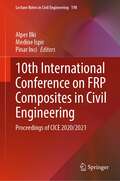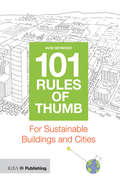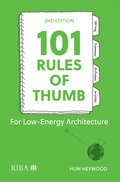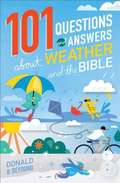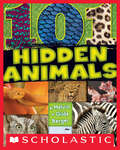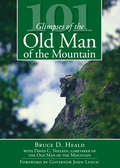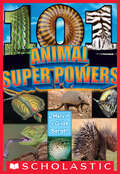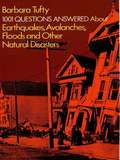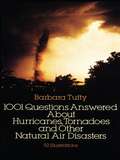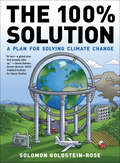- Table View
- List View
The 1940 Vrancea Earthquake. Issues, Insights and Lessons Learnt
by Radu Vacareanu Constantin IonescuThese proceedings include most of the available information on this major seismic event and its consequences. With an estimated moment magnitude of 7. 7 and a heavy toll in terms of human and economic losses, it ranks as the largest intermediate-depth earthquake in Europe in the twentieth century. Nevertheless, because of the difficult conditions in the 1940s, the lessons learnt after the Vrancea earthquake were not extensively shared with the international scientific community and thus, this book fills a gap in the literature discussing the knowledge acquired after major disasters. Past experience together with current understanding of the 1940 Vrancea earthquake are presented along with the latest information on Romanian seismicity, seismic hazard and risk assessment, and seismic evaluation and rehabilitation of buildings and structures. Moreover, it includes excerpts from Romanian post-disaster reports and textbooks concerning the earthquake.
The 1935 Republican River Flood (Disaster)
by Joy HaydenOn May 31, 1935, a storm system surged along the Republican River, bursting its banks in a matter of minutes with a roar that could be heard miles away. The greatest flood to hit the tri-state area of Colorado, Kansas and Nebraska, it left behind a landscape rearranged beyond recognition and claimed more than one hundred casualties. However, amid all the destruction and sorrow, amazing acts of heroism and unwavering courage were reported throughout the valley. Author Joy Hayden reveals the historic disaster and the steadfast resolve of those who witnessed it.
The 1924 Tornado in Lorain & Sandusky: Deadliest In Ohio History (Disaster)
by Betsy D'AnnibaleJune 28, 1924, dawned hot and sunny, with fluffy white clouds hovering over a blue and inviting Lake Erie. For two Ohio communities, Lorain and Sandusky, the day ended in unimaginable disaster. In the late afternoon, the blue sky turned dark, and the wispy white puffs morphed into a mass of black thunderclouds as a monster formed on the lake. An F4 tornado, unexpected and not understood, was born from a thunderstorm on the now turbulent waters of Lake Erie. It charged ashore, smashing into Sandusky, retreated again to the lake and then headed east before turning abruptly south to make landfall in Lorain. Before the massive funnel lifted, it would destroy a city, create death records still unbroken and change the lives of thousands of people.
The 1910 Wellington Disaster (Images of America)
by Deborah Cuyle Rodney FletcherThe town of Wellington was located by the Stevens Pass summit in the Cascade Mountains. During the last days of February in 1910, the snow was relentless in the Cascades, falling as much as one foot per hour and rising up to 20 feet deep in areas. Rotary plows could not keep the lines open as snow covered the railroad tracks almost immediately after being cleared. The Seattle Express, coming from Spokane, and a fast mail train were stranded just beyond the "safety" of the Cascade Tunnel, where they remained unmovable for almost a week under the snowpacked mountains. On March 1, an avalanche swept away the tracks and passengers aboard the two trains as well as several of Wellington's buildings and homes. Almost 100 individuals were killed in just a few seconds, creating America's deadliest avalanche and train disaster in history. Today, the site is part of the Iron Goat Trail off Highway 2, east of Skykomish. The snowshed, the abandoned original Cascade Tunnel, and various scraps of the trains left in the ravine are the only evidence that remain of Wellington, its long-forgotten inhabitants, or the disaster.
1906 San Francisco Earthquake (Images of America)
by Richard Hansen Gladys HansenOne of the greatest disasters of the twentieth century, in words and photos. The Great Earthquake and Fire of 1906 was an unparalleled catastrophe in the history of San Francisco. More than 4.5 square miles of the city burned and crumbled into a windswept desert of desolation. This book is filled with remarkable images, from before the earthquake through the blaze and into the rebuilding. With stories from survivors, and extensive photographs of sites from the waterfront in the east to Golden Gate Park in the west, the marina in the north to the Mission District in the south, readers can gain a vivid sense of this major historical event and how it affected one of America&’s greatest cities.
17 Ways to Save the World
by Louise SpilsburyHelp the United Nations to save the world! On 25 September 2015, world leaders at the UN adopted 17 Sustainable Development Goals. These new Goals, which universally apply to all people, are a call to take action to end all forms of poverty, fight inequalities and tackle climate change, while ensuring no one is left behind. For the Goals to be reached, it is not just the actions of governments and businesses that are important - you can help the UN save the world, too! Produced in support of the United Nations, 17 Ways to Save the World is an accessible guide to how you can help the UN achieve their 17 Sustainable Development Goals. As well as charting the global issues identified in the Goals, this book will demonstrate how small lifestyle changes can help in solving the world's biggest issues, empowering you to actively pursue a more sustainable future. This book is the perfect tool for kids aged 9+ looking to make a meaningful difference. Immersive artwork and sensitive text presents serious, worldwide problems in an compassionate manner, encouraging both empathy and action.
150 Survival Secrets: Advice on Survival Kits, Extreme Weather, Rapid Evacuation, Food Storage, Active Shooters, First Aid, and More
by James C. JonesAs the world gets more dangerous, you have to be prepared for anything, even the worst. In 150 Survival Secrets, seasoned survivalist James C. Jones provides insider tips to help you and your family survive any catastrophe. Divided into practical sections, 150 Survival Secrets answers every question you’ve ever had about disaster preparedness. One section lists the practical details of making it through any kind of emergency situation. Some topics include: How to survive extreme winter conditionsHow to put together a homemade survival kit in the case of an emergencyHow to safely evacuate from an urban area during a disasterHow much and what type of food to store at home for long-term emergenciesHow to survive an active shooter situationHow to treat common injuries. Other sections answer everything you’ve ever wondered about disaster prepping, including what being a survivalist entails, how to equip your home for survival situations, what gear is essential for a survivalist to own, what elements are essential in a good emergency plan, what types of disasters you can expect to face in your lifetime, and more. So what are you waiting for? With 150 Survival Secrets, you’ll be prepared for anything and everything.
150 Best Eco House Ideas
by Marta SerratsFeaturing an extensive collection of full-color photographs, 150 Best Eco House Ideas features eco-friendly house designs created by internationally renowned architects and designers who have achieved practical, innovative, and stunning solutions adapted to the specific needs and tastes of their clients. Included here are the latest innovations in sustainable home design, including solar paneling, wind energy systems, environmentally-friendly heating and cooling solutions, thermal glazing, and trombe walls.150 Best Eco House Ideas covering the diversity of current trends in sustainable home design, and is both the perfect resource for designers, interior decorators, and architects, as well an inspirational sourcebook for all homeowners interested in creating warm and inviting homes that cause only a fraction of the environmental impact of those created using conventional building methods.
The 15-Minute City: A Solution to Saving Our Time and Our Planet
by Carlos MorenoA fresh and innovative perspective on urban issues and creating sustainable cities In The 15-Minute City: A Solution for Saving Our Time and Our Planet, human city pioneer and international scientific advisor Carlos Moreno delivers an exciting and insightful discussion of the deceptively simple and revolutionary idea that everyday destinations like schools, stores, and offices should only be a short walk or bike ride away from home. This book tells the story of an idea that spread from city to city, describing a new way of looking at living that addresses many of the most intractable challenges of our time. Hundreds of mayors worldwide have already embraced the concept as a way to help recover from the pandemic, and the idea continues to gain speed. You'll learn why more and more cities are planning to make cars far less necessary for contemporary city-dwellers and how they're planning to achieve that goal. You'll also find: Strategies for cities to recover and adapt to benefit residents, saving them precious time Techniques to change the habits of automobile-dependent city residents and maximize social benefits of living in a human-centric city Scientifically developed, research-backed solutions for enduring urban issues and problems Deeply committed to science, progress, and creativity, Moreno presents an essential and timely resource in The 15-Minute City, which will prove invaluable to anyone with an interest in modern and innovative approaches to consistently challenging urban issues that have bedeviled policy makers and city residents since the invention of the car.
14th International Congress for Applied Mineralogy: Belgorod State Technological University named after V. G. Shukhov, 23–27 September 2019, Belgorod, Russia (Springer Proceedings in Earth and Environmental Sciences)
by Sergey GlagolevThis open access proceedings of the 14th International Council for Applied Mineralogy Congress (ICAM) in Belgorod, Russia cover a wide range of topics including applied mineralogy, advanced and construction materials, ore and industrial minerals, mineral exploration, cultural heritage, etc. It includes contributions to geometallurgy, industrial minerals, oil and gas reservoirs as well as stone artifacts and their preservation. The International Congress on Applied Mineralogy strengthens the relation between the research on applied mineralogy and the industry.
1491: The Americas Before Columbus
by Charles MannIn this groundbreaking work of science, history, and archaeology, Charles C. Mann radically alters our understanding of the Americas before the arrival of Columbus in 1492. Contrary to what so many Americans learn in school, the pre-Columbian Indians were not sparsely settled in a pristine wilderness; rather, there were huge numbers of Indians who actively molded and influenced the land around them. The astonishing Aztec capital of Tenochtitlan had running water and immaculately clean streets, and was larger than any contemporary European city. Mexican cultures created corn in a specialized breeding process that it has been called man's first feat of genetic engineering. Indeed, Indians were not living lightly on the land but were landscaping and manipulating their world in ways that we are only now beginning to understand. Challenging and surprising, this is a transformative new look at a rich and fascinating world we only thought we knew.
140 Artists' Ideas for Planet Earth
by Hans Ulrich Obrist Kostas StasinopoulosThrough 140 drawings, thought experiments, recipes, activist instructions, gardening ideas, insurgences and personal revolutions, artists who spend their lives thinking outside the box guide you to a new worldview; where you and the planet are one.Everything here is new. We invite you to rip out pages, to hang them up at home, to draw and scribble, to cook, to meditate, to take the book to your nearest green space.Featuring Olafur Eliasson, Etel Adnan, Alexis Pauline Gumbs, Jane Fonda & Swoon, Judy Chicago, Black Quantum Futurism Collective, Vivienne Westwood, Cauleen Smith, Marina Abramovic, Karrabing Film Collective, and many more.
12th International Conference on Structural Engineering and Construction Management: Proceedings of the ICSECM 2021 (Lecture Notes in Civil Engineering #266)
by Ranjith Dissanayake Priyan Mendis Kolita Weerasekera Sudhira De Silva Shiromal Fernando Chaminda KonthesinghaThis book highlights advances in the fields of civil engineering and construction industry with a particular focus on Structural Engineering and Construction Management. This book consists of top quality and innovative research papers selected from the proceedings of the 12th ICSECM 2021 under the themes of Innovations in Building Materials, Construction Management, Tall buildings, Concrete Technology and High Performance concrete, Geotechnical Engineering, Water and Waste Water Treatment, CKDu problem in Sri Lanka, Structural Health Monitoring & Design of Resistive Structures, Disaster Risk Reduction and Resilience in the Built Environment, Fibre Reinforced Polymer, Life Cycle Assessment of Buildings and Fire Safety Engineering.
12 Small Acts to Save Our World: Simple, Everyday Ways You Can Make a Difference
by WWF_______________________________— Ever wanted to save the world? —It’s easy to feel like we can’t make a difference. But small, easy actions, if taken by enough people, can move mountains – and save planets.Written in collaboration with leading environmental experts from WWF, this short book provides simple changes we can all make to our everyday lives, from morning to night.These aren’t the only things you can do. Nor are they things you have to do. But these 12 small acts are basic steps anybody can take, and if even one of them sticks, our children will inherit a better world.Acts like:– Turning off devices instead of leaving them on standby– Buying less cotton clothing (a T-shirt needs 2,400 litres of water to make!)– Using reusable straws when possible– Turning off the tap while you brush your teethwill take only moments, but if enough people commit to them, we can make a real difference to our planet._______________________________'Now really is the time to act. You don’t have to be a superhero – everyone can make a difference by following this book’ – Ben Fogle
10th International Symposium on the Conservation of Monuments in the Mediterranean Basin: Natural and Anthropogenic Hazards and Sustainable Preservation
by Maria Koui Fulvio Zezza Dimitrios KouisThis book addresses physical, chemical, and biological methods for the preservation of ancient artifacts. Advanced materials are required to preserve the Mediterranean belt's historic, artistic and archaeological relics against weathering, pollution, natural risks and anthropogenic hazards. Based upon the 10th International Symposium on the Conservation of Monuments in the Mediterranean Basin, this book provides a forum for international engineers, architects, archaeologists, conservators, geologists, art historians and scientists in the fields of physics, chemistry and biology to discuss principles, methods, and solutions for the preservation of global historical artifacts.
10th International Conference on FRP Composites in Civil Engineering: Proceedings of CICE 2020/2021 (Lecture Notes in Civil Engineering #198)
by Alper Ilki Medine Ispir Pinar InciThis volume highlights the latest advances, innovations, and applications in the field of FRP composites and structures, as presented by leading international researchers and engineers at the 10th International Conference on Fibre-Reinforced Polymer (FRP) Composites in Civil Engineering (CICE), held in Istanbul, Turkey on December 8-10, 2021. It covers a diverse range of topics such as All FRP structures; Bond and interfacial stresses; Concrete-filled FRP tubular members; Concrete structures reinforced or pre-stressed with FRP; Confinement; Design issues/guidelines; Durability and long-term performance; Fire, impact and blast loading; FRP as internal reinforcement; Hybrid structures of FRP and other materials; Materials and products; Seismic retrofit of structures; Strengthening of concrete, steel, masonry and timber structures; and Testing. The contributions, which were selected by means of a rigorous international peer-review process, present a wealth of exciting ideas that will open novel research directions and foster multidisciplinary collaboration among different specialists.
101 Rules of Thumb for Sustainable Buildings and Cities
by Huw HeywoodPeople across the world are becoming more aware of the need for the buildings and cities they live and work in to be sustainable, but the issue of how to be sustainable can seem a confusing and complex one. These rules of thumb provide universal guidelines for the sustainable design of both buildings and the urban realm. It’s a global primer and textbook for anyone interested in understanding sustainability in the built environment, an ideal starting point for students as well as an aide memoir for more experienced readers and practitioners interested in this field.
101 Rules of Thumb for Low-Energy Architecture
by Huw HeywoodBuildings and construction are a major contributor to the climate and biodiversity emergency. They account for nearly 40% of energy-related carbon dioxide (CO2) emissions. It is more important than ever for architects to design responsibly and create low-carbon, low-energy buildings for a sustainable future. 101 Rules of Thumb sets out the essential elements of low-energy architecture in a fresh, intuitive way. Where ever-changing technology and complex legislation can cloud the designer’s thought-process, this book equips you with the fundamentals you need to minimise CO2 emissions, design for low-energy use and work with, not against, the forces of nature. With reliable, simple rules of thumb, each page focuses on a single piece of guidance along with a clear hand-drawn illustration. The emphasis is on passive low-energy principles, and the rules of thumb cover all the design fundamentals from site and location to orientation and form, peppered with ideas to help the designer think outside the box, drawing inspiration from traditional methods, photoperiodic plants, and the black-tailed prairie dog. An extended, fully updated narrative bibliography explores the sources in detail and provides a valuable springboard for further study. Applicable throughout the world in any climate region, 101 Rules of Thumb is a global primer to be dipped into at any time as a quick means of re-focusing on what’s important when designing a new or retrofitted low-energy building. The rules cover: Site and location Orientation and form The low-energy building envelope Carbon free heating, cooling and lighting Passive low-energy principles.
101 Questions and Answers about Weather and the Bible
by Donald B. DeYoungThis engaging book provides teachers and parents with 100 questions and answers about weather and the Bible, revealing truths about God and his creation.
101 Hidden Animals (A\true Book (relaunch) Ser.)
by Melvin Berger Gilda BergerDiscover the 101 most amazing disguises in the animal kingdom!The fifth book in the 101 ANIMAL series, 101 ANIMALS IN HIDING, will feature some of the most extraordinary creatures in nature. Featuring large full-color photos of camouflaged animals, see insects, reptiles, mammals, birds, and fish blend into their backgrounds. Learn how and why these amazing animals have developed these adaptations.
101 Glimpses of the Old Man of the Mountain
by Bruce D. Heald David C. Nielsen Governor John LynchThe Old Man of the Mountain once cast a steady gaze upon the slopes of Franconia Notch. Its profile drew writers, explorers and presidents, delighting all who glimpsed its features. But when it collapsed on May 3, 2003, the Old Man seemed forever lost. Veteran historian Bruce Heald and the last caretaker of the Old Man, David Nielsen, have gathered 101 images from the profile's long history. These one-of-a-kind photos from Nielsen's private collection depict four decades of preservation work, seismic testing by national experts, visits from dignitaries and rare memorabilia. With Nielsen's personal reflections on his life's work and Heald's notes on the history of the Old Man, this volume recaptures the wonder of New Hampshire's great stone face.
101 Animal Superpowers
by Melvin Berger Gilda BergerFind out which creatures in the animal kingdom have the coolest superpowers in this new book in the 101 Animal series!Discover some of the most extraordinary creatures in nature! This book takes a close look at 101 of the coolest tricks and superpowers in the animal kingdom. Find out how these animals' superpowers work and what they use them for--both to hunt and to protect themselves! Organized from A to Z, meet insects, reptiles, mammals, birds, and fish, all that have amazing super-abilities!
1001 Questions Answered About: Earthquakes, Avalanches, Floods and Other Natural Disasters
by Barbara TuftyThis highly readable and informative guide answers hundreds of fascinating questions about storms and atmospheric phenomena. In addition to dispelling common misconceptions, it imparts a wealth of solid scientific data about hurricanes, tornadoes, thunderstorms, wind, fog, ice storms, and other events. The text is embellished with 72 drawings and 20 photographs.
1001 Questions Answered About: Hurricanes, Tornadoes and Other Natural Air Disasters
by Barbara TuftyThis highly readable and informative guide answers hundreds of fascinating questions about storms and atmospheric phenomena. In addition to dispelling common misconceptions, it imparts a wealth of solid scientific data about hurricanes, tornadoes, thunderstorms, wind, fog, ice storms, and other events. The text is embellished with 72 drawings and 20 photographs.
The 100% Solution: A Plan for Solving Climate Change
by Solomon Goldstein-Rose"At last--a global plan that actually adds up."--James Hansen, former director, NASA Goddard Institute for Space StudiesThe world must reach negative greenhouse gas emissions by 2050 to avoid the most catastrophic effects of climate change. Yet no single plan has addressed the full scope of the problem--until now. In The 100% Solution, Solomon Goldstein-Rose--a leading millennial climate activist and a former Massachusetts state representative--makes clear what needs to happen to hit the 2050 target: the manufacturing booms we must spur, the moonshot projects we must fund, the amount of CO2 we'll have to sequester from the atmosphere, and much more. Most importantly, he shows us the more prosperous and equitable world we can build by uniting the efforts of activists, industries, governments, scientists, and voters to get the job done. This is the guide we've been waiting for. As calls for a WWII-scale mobilization intensify--especially among youth activists--this fully illustrated, action-oriented book arms us with specific demands, sets the stakes for what our leaders must achieve, and proves that with this level of comprehensive thinking we can still take back our future.
